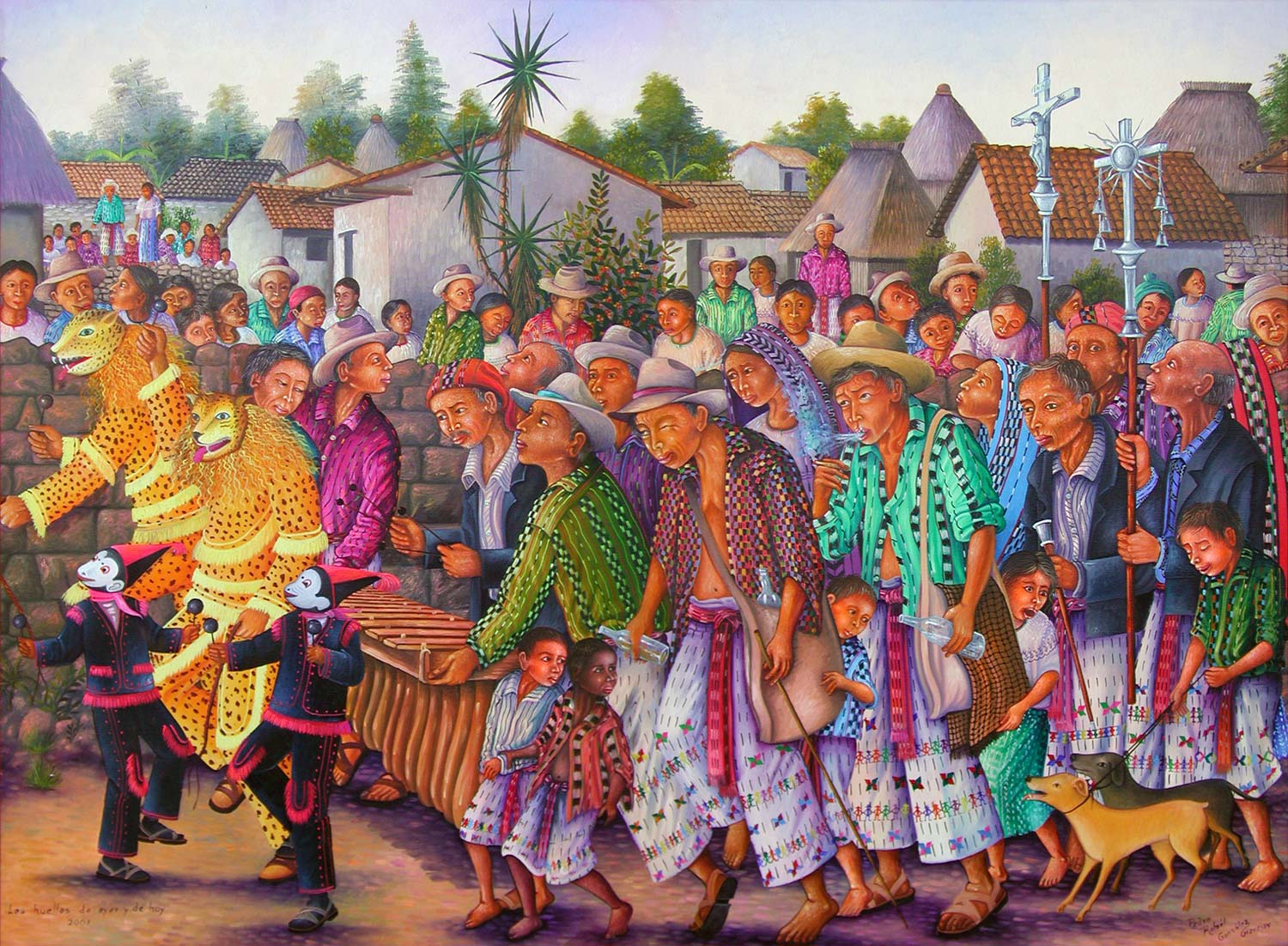Panel 2: Town Elders, Municipal Government
The second and third panels of the triptych deal with the local government and the Catholic Church. The church and state of San Pedro and all other highland Maya towns at that time were intrinsically intertwined in a civil ceremonial system. In the middle panel of the painting, the man between the two crosses is the mayor of the town. He carries in his hand a baton that is symbol of his office. Directly behind him we see the head of a man wearing a distinctive red tzute or su’t (headscarf), which is an indication that he is one of the principales (high-ranking elders) of the town.
When anthropologist Benjamin D. Paul arrived in San Pedro in 1940, the civil ceremonial system was still strong and the cofradías still active. He says, (Paul 1989, 1) it “…was a marvel to behold. The product of countless years of operation, its organization was intricate and neatly articulated. And it served a host of significant functions for the individual and the community.” Under the cofradía system, about every four years men were expected to devote all or part of their time to public service. The terms, which lasted for a year, would alternate between the church and the municipal government of the town. During the year of service, their responsibilities would be handled by other family members, so they could devote themselves to the needs of their office. As a person aged, he served in positions of greater importance, and with these positions came greater respect from the community.
On the civil side, Benjamin Paul counted 35 positions, among them alcalde (mayor), five regidores (councilmen), a síndico, a policía, first and second mayores (constables), interpretes (people who spoke both Tz’utujil and Spanish), twelve alguaciles (errand men), and twelve regidores auxiliares who rowed the large wooden municipal canoe that went daily between San Pedro and Santiago Atitlán (Paul 1989). The alcalde would be chosen by the town’s principales—men of the village who were present or past heads of the six different cofradías. This system, in which the alcalde was chosen by people who had served in the religious cofradías, kept the government of the town and the church intertwined.
In the 1940s, General Jorge Ubico introduced military training to the Maya towns. One result was that young men who went away to serve in the military would refuse for a time to do servicio in the civil ceremonial system of the town when they returned. Then, in between the 1950s and 1970s, Protestantism began attracting significant numbers of Maya. These Maya began refusing to participate in the Catholic cofradías, although they would still perform their civil duties. During the 1950s when liberal Areval-Arbenz was president before being deposed by a CIA coup, it was decreed that the mayor and other town officials would be elected by popular vote. Benjamin Paul observes, “At first this made little difference; the town was willing to confirm the slate proposed by the principales in accordance with custom. But in time, competition between rival political parties arose, with the result that elected officers were no longer part of a unified civil-ceremonial hierarchy.”


